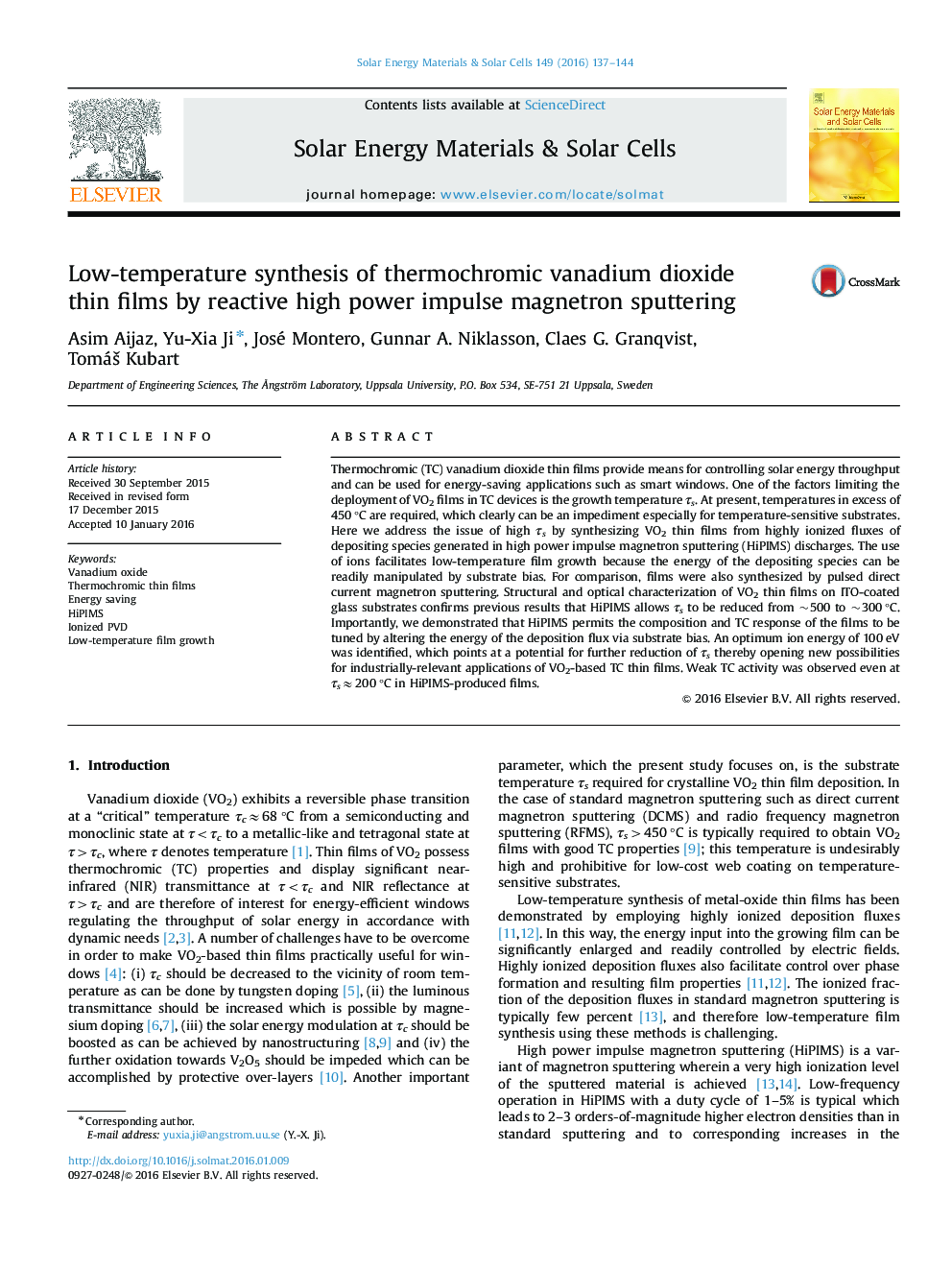| Article ID | Journal | Published Year | Pages | File Type |
|---|---|---|---|---|
| 6534761 | Solar Energy Materials and Solar Cells | 2016 | 8 Pages |
Abstract
Thermochromic (TC) vanadium dioxide thin films provide means for controlling solar energy throughput and can be used for energy-saving applications such as smart windows. One of the factors limiting the deployment of VO2 films in TC devices is the growth temperature Ïs. At present, temperatures in excess of 450 °C are required, which clearly can be an impediment especially for temperature-sensitive substrates. Here we address the issue of high Ïs by synthesizing VO2 thin films from highly ionized fluxes of depositing species generated in high power impulse magnetron sputtering (HiPIMS) discharges. The use of ions facilitates low-temperature film growth because the energy of the depositing species can be readily manipulated by substrate bias. For comparison, films were also synthesized by pulsed direct current magnetron sputtering. Structural and optical characterization of VO2 thin films on ITO-coated glass substrates confirms previous results that HiPIMS allows Ïs to be reduced from ~500 to ~300 °C. Importantly, we demonstrated that HiPIMS permits the composition and TC response of the films to be tuned by altering the energy of the deposition flux via substrate bias. An optimum ion energy of 100 eV was identified, which points at a potential for further reduction of Ïs thereby opening new possibilities for industrially-relevant applications of VO2-based TC thin films. Weak TC activity was observed even at Ïsâ200 °C in HiPIMS-produced films.
Related Topics
Physical Sciences and Engineering
Chemical Engineering
Catalysis
Authors
Asim Aijaz, Yu-Xia Ji, José Montero, Gunnar A. Niklasson, Claes G. Granqvist, TomáÅ¡ Kubart,
